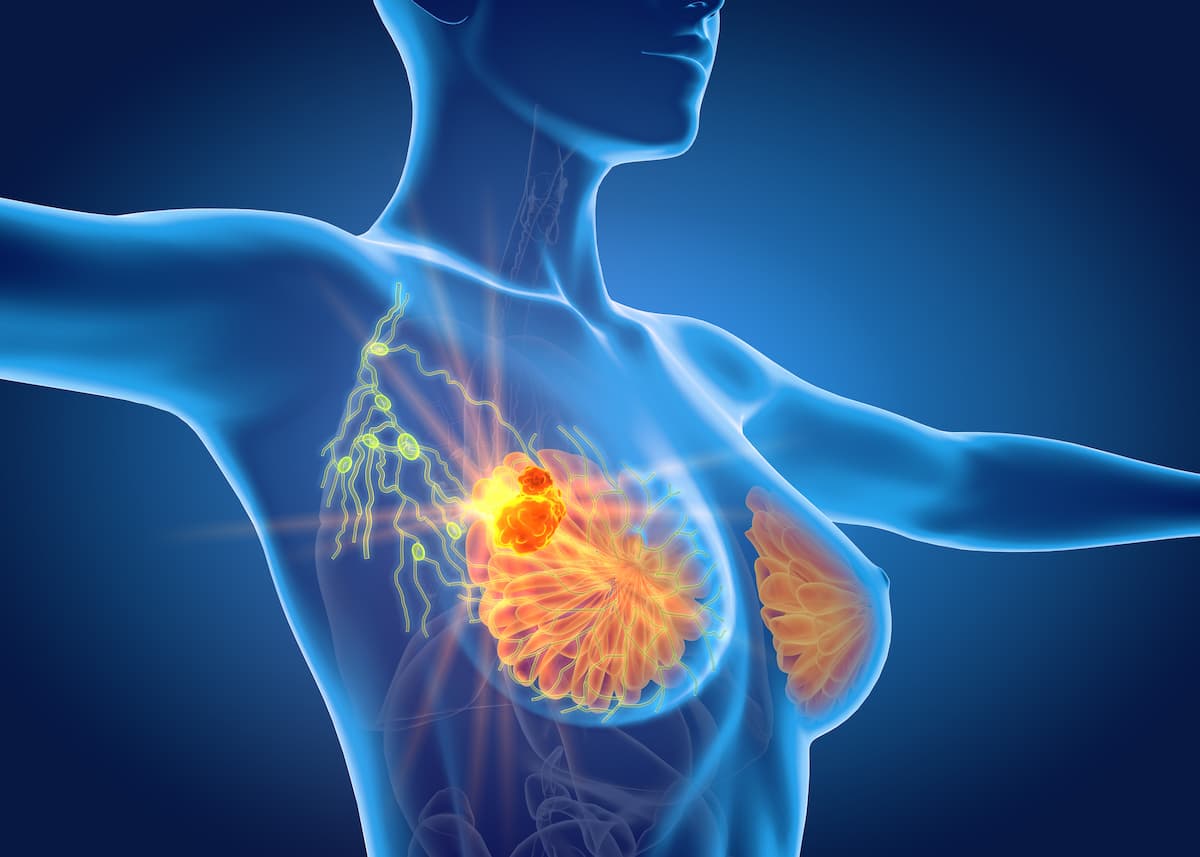Post-Surgical Radiation Omission did not Raise Breast Cancer Distant Recurrence
Overall survival after 10 years appears to be comparable regardless of whether patients 65 years or older received irradiation following surgery for low-risk, hormone receptor–positive breast cancer.
Omitting radiotherapy following breast-conserving surgery had no detrimental effect on distant recurrence as the first event or overall survival (OS), although the incidence of local recurrence increased for low-risk, estrogen receptor (ER)–positive early breast cancer in patients aged 65 years and older, according to findings from the phase 3 PRIME II study.
“Our trial provides robust evidence indicating that irradiation can be safely omitted in [patients] 65 years of age or older who have grade 1 or 2, ER-high cancers treated by breast-conserving therapy, provided that they receive 5 years of adjuvant endocrine therapy,” according to the authors of the phase 3 PRIME II study.

The 10-year cumulative local breast cancer recurrence rate was 9.5% (95% CI, 6.8%-12.3%) in patients who did not receive radiotherapy vs 0.9% (95% CI, 0.1%-1.7%) for patients who received radiotherapy (HR, 10.4; 95% CI, 4.1-26.1; P <.001). In the radiotherapy-free group, 48 of 51 local recurrences occurred as the first event, which included 37 patients who developed local recurrence.
The 10-year cumulative distant recurrence as the first event rate was 1.6% (95% CI, 0.4%-2.8%) without radiotherapy vs 3.0% (95% CI, 1.4%-4.5%) with radiotherapy, with no substantial differences in the cumulative incidence of regional recurrence, contralateral breast cancer, or new cancers.
Overall survival rate at 10 years was 80.8% (95% CI, 77.2%-84.3%) for patients in the radiotherapy-free group vs 80.7% (95% CI, 76.9%-84.3%) for those receiving radiotherapy.
“Our trial provides robust evidence indicating that irradiation can be safely omitted in [patients] 65 years of age or older who have grade 1 or 2, ER-high cancers treated by breast-conserving therapy, provided that they receive 5 years of adjuvant endocrine therapy,” the study authors stated.
Investigators of the randomized phase 3 PRIME II study compared the omission and use of whole-breast irradiation for patients with ER-positive early breast cancer following breast-conserving surgery. Patients were randomly assigned 1:1 to either receive 40 to 50 Gy of whole-breast irradiation in 2.66 to 2.00 Gy per fraction in 20 to 25 fractions or no radiotherapy.
The study’s primary end point was local breast cancer recurrence. Secondary end points included regional recurrence defined as disease in the ipsilateral axillary or supraclavicular lymph nodes, contralateral breast cancer, distant metastases, disease-free survival (DFS), and OS.
Patients 65 years and older with T1 or T2 primary, node-negative, ER-positive, or progesterone receptor–positive breast cancer treated with breast-conserving therapy plus axillary staging were eligible for enrollment on the study. Additional inclusion criteria included having cancer with grade 3 histologic features or lymphovascular invasion, but not both.
Investigators included a total of 1326 patients, 658 of whom received whole-breast irradiation and 668 received no radiotherapy. The median patient age was 70 years (interquartile range, 67-74), and less than 10% of patients had ER-low tumors.
Investigators noted that baseline characteristics of the patient population were comparable between the 2 treatment groups. Most patients in the radiotherapy-free and radiotherapy groups, respectively, had grade 2 tumors (55.1% vs 53.5%), tumors located in the left breast (53.7% vs 52.4%), no lymphovascular invasion (94.5% vs 95.4%), and no preoperative endocrine therapy (91.0% vs 90.9%).
The 10-year DFS rate was 68.9% (95% CI, 64.7%-73.0%) for patients who did not receive radiotherapy vs 76.3% (95% CI, 72.5%-80.2%) for those who did receive radiotherapy. Additionally, breast cancer-specific survival at 10 years was 97.4% (95% CI, 96.0%-98.8%) vs 97.9% (95% CI, 96.5%-99.2%) in each respective group.
Investigators reported 16 deaths in the no-radiotherapy group vs 15 deaths in the radiotherapy group due to breast cancer.
A subgroup analysis indicated that the cumulative incidence of local recurrence was lower for patients with ER-high cancer than in the overall patient population. The 10-year cumulative incidence of local recurrence for patients with ER-high tumors was 8.6% (95% CI, 5.7%-11.4%) in the no-radiotherapy group vs 1.0% (95% CI, 0.1%-1.9%) in the radiotherapy group (HR, 8.23; 95% CI, 3.24-20.85).
The 10-year cumulative incidence of local recurrence for those with ER-low tumors was 19.1% (95% CI, 8.2%-29.9%) for patients who did not receive radiotherapy. There was no local recurrence among patients with ER-low tumors who received radiotherapy.
Based on data concerning the duration of adjuvant endocrine therapy, a time-dependent analysis highlighted an increased risk of local recurrence for patients in the radiotherapy-free group who were no longer receiving endocrine therapy vs those who continued to take endocrine therapy (HR, 4.66; 95% CI, 1.77%-12.25%).
Reference
Kunkler IH, Chir B, Williams LJ, et al. Breast-conserving surgery with or without irradiation in early breast cancer. N Engl J Med. 2023;388(7):585-594. doi:10.1056/NEJMoa2207586